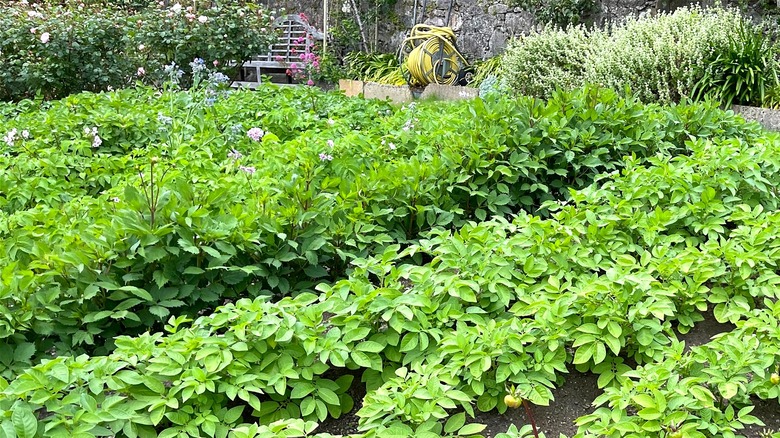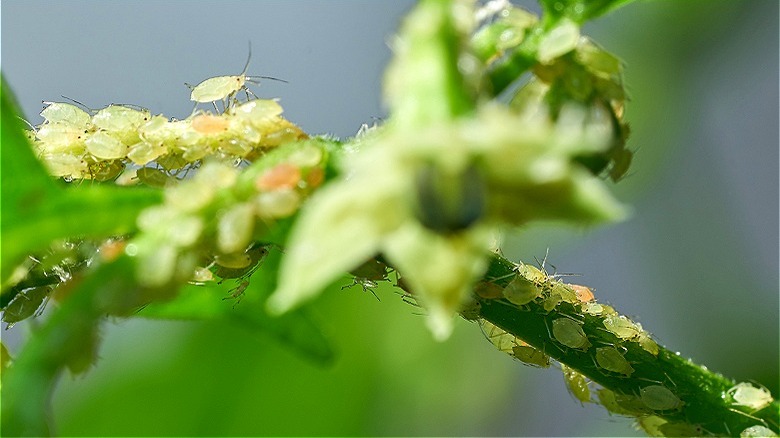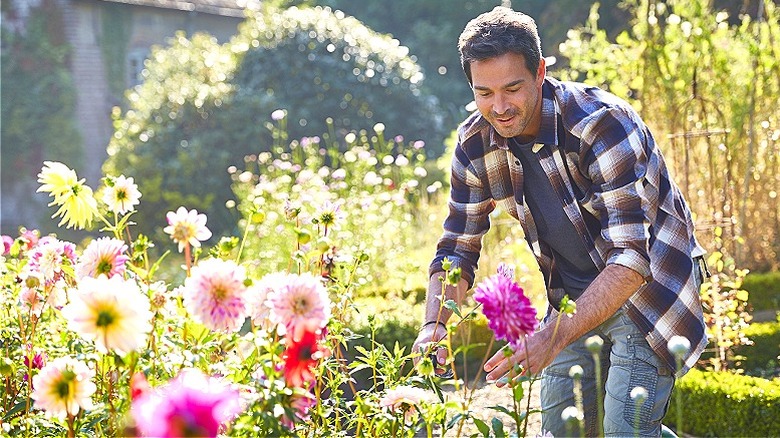Why Dahlias And Potatoes Don't Mix In The Garden
Today, we're delving into the intriguing world of companion planting to shed light on why potatoes (Solanum tuberosum) and dahlias (Dahlia) don't make great garden neighbors. While both of these plants bring their own kind of charm to a garden — not to mention potatoes are delicious and dahlia blooms are beautiful — they simply aren't meant to grow side by side.
Potatoes are heavy feeders, notorious for their voracious appetite when it comes to nutrients, especially nitrogen. They thrive in rich, well-fertilized soil. In contrast, dahlias are more modest feeders, preferring a balanced nutrient environment. This difference in nutrient needs can lead to competition when the two plants are grown together, with potatoes often absorbing a disproportionate share of available resources, leaving dahlias nutrient-deprived.
Furthermore, dahlias grow into tall leafy plants (3 to 4 feet high) that can create a dense canopy that could shade out any neighboring plants. Potatoes, on the other hand, only grow about 40 inches high and require full sunlight to flourish. As a result, shade cast by dahlia foliage could hinder potato growth and limit the size of your harvest.
Potential cross-contamination issues
While potatoes and dahlias don't share many common pests or diseases, there are some potential issues that can affect both plants indirectly if they're planted next to each other in the garden. To start, potatoes are susceptible to specific pests and diseases, such as the Colorado potato beetle, which can defoliate potato plants if left unchecked, and late blight, which is a fungal disease that can devastate potato crops if not controlled. There's also potato scab that can affect the appearance of potato tubers.
Dahlias, meanwhile, are vulnerable to certain fungal diseases like powdery mildew and gray mold or Botrytis cinerea; however, these diseases aren't typically associated with potatoes. But dahlias are also prone to infestation by aphids and/or spider mites, which are common garden pests affecting a wide range of plants, including the potatoes in your garden.
The potential problem, then, when planting potatoes and dahlias together is the risk of cross-contamination. If one of the plants becomes infected with a disease or infested with pests, there's a chance that these issues can spread to the other plant. To mitigate this risk, it's crucial to monitor both plants regularly for signs of pests or diseases and take appropriate measures to control any issues promptly. Proper spacing and good garden hygiene can also help reduce the risk of disease transmission between these two plants.
Companion plants for dahlias and potatoes
If you have dahlias in your garden and are looking for compatible companions, there are plenty of other plants other than potatoes that can share the space. Rather than potatoes, consider planting dahlias alongside marigolds or nasturtiums, annual flowers that not only complement dahlias beautifully but also help deter pests with their natural repellent properties.
As for potatoes, beans make fantastic companion plants. Beans repel Colorado potato bugs and fix nitrogen in the soil, benefiting the nitrogen-hungry potato plant. In return, potatoes protect beans from Mexican bean beetles. Planting horseradish near potatoes can also help deter pests like the aforementioned Colorado potato beetle, aphids, and more. A common companion for both dahlias and potatoes is marigold, which for potatoes, can help keep pests like the Colorado potato beetle away with its smell.
By selecting the appropriate companion plants for your dahlias and potatoes, you can create a harmonious garden that not only looks stunning but also promotes healthier growth for all your plants. Instead of planting dahlias and potatoes together, opt for better plant neighbors for them both and avoid issues like incompatible growing conditions and cross-contamination.


